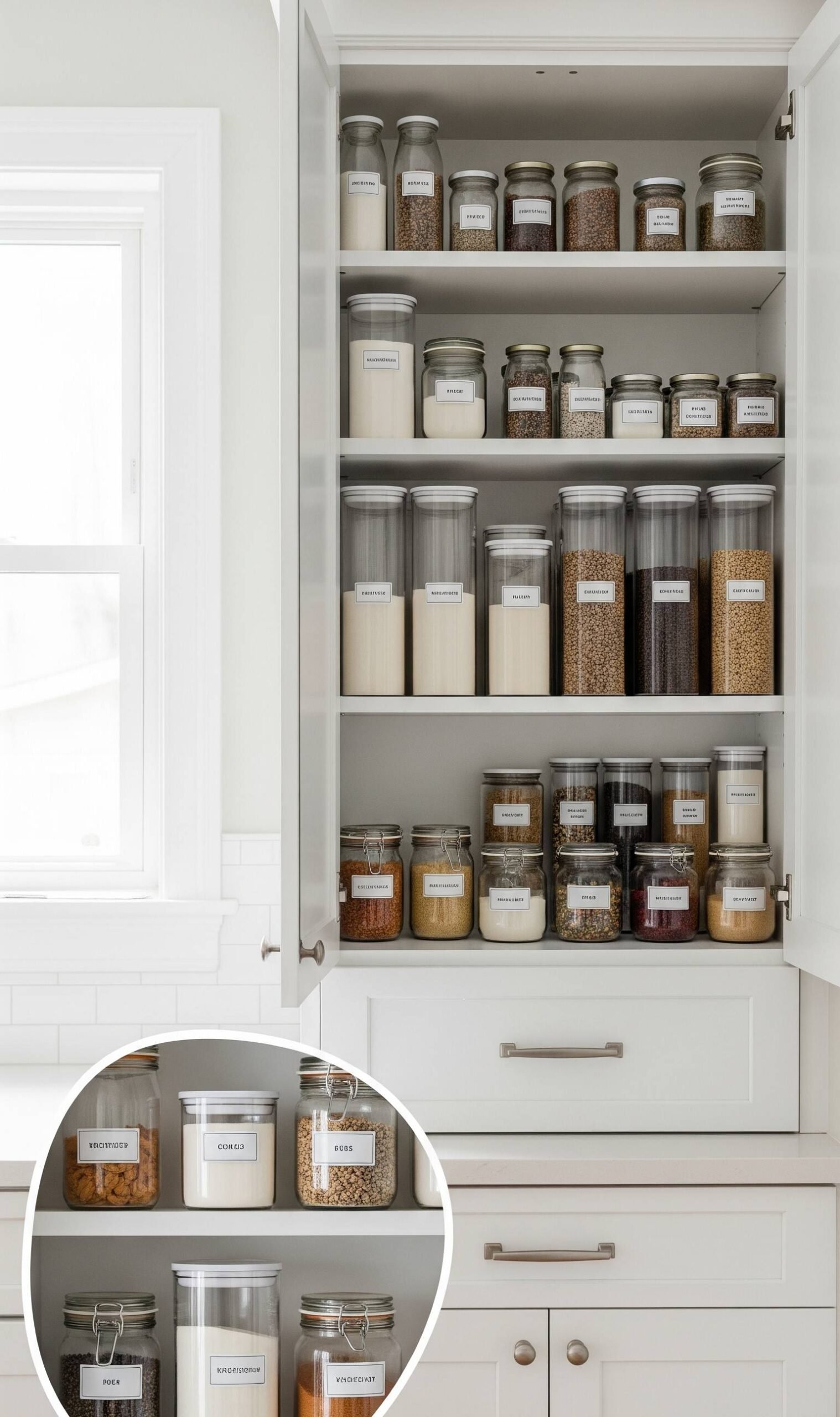How to Organize Kitchen Cabinets: A Comprehensive Guide
Organizing your kitchen cabinets can significantly improve the functionality and flow of your kitchen.
A well-organized space makes cooking easier, reduces clutter, and saves you time searching for items.
This guide provides a step-by-step approach to effectively organizing your kitchen cabinets.
1. The Initial Purge and Assessment
Before you start rearranging items, the first crucial step is to declutter. Take everything out of your cabinets, one section at a time. This allows you to see exactly what you have and identify items you no longer need.
- Remove Everything: Empty one cabinet completely. Place all the contents on a clear surface, like your kitchen counter or table.
- Categorize Items: As you remove items, create loose categories: dishes, cookware, food storage containers, small appliances, pantry staples (if the cabinet was used for food), etc.
- Identify Unnecessary Items: Go through each category and ask yourself the following questions:
- Have I used this in the past year?
- Is it broken or damaged?
- Do I have duplicates that I don’t need?
- Does it still fit my lifestyle?
- Discard, Donate, or Sell: Be ruthless in your decluttering. Dispose of broken items, donate items you no longer use, and consider selling valuable items you don’t need.
- Clean the Empty Cabinets: Once a cabinet is empty, take the opportunity to clean it thoroughly. Wipe down shelves and interiors with a damp cloth and a mild cleaning solution. This creates a fresh start for your organized space.
- Assess Your Storage Needs: After the purge, look at the remaining items and consider how frequently you use them. This will help you determine the best placement for different categories within your cabinets.
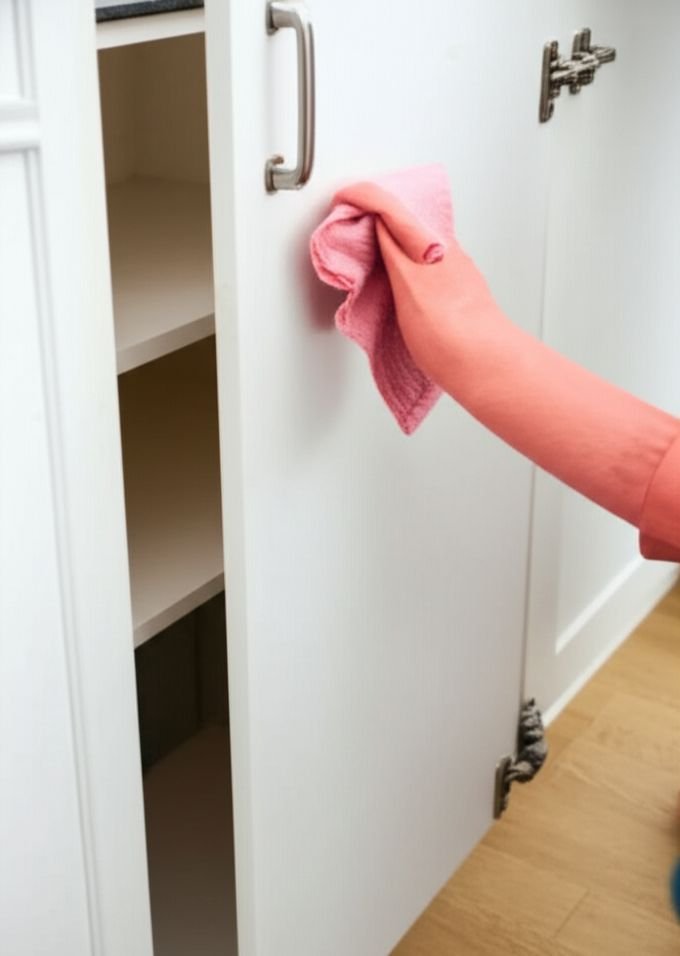
2. Strategic Zoning and Placement
Once you know what you have, the next step is to plan where everything should go. Consider the layout of your kitchen and how you use different zones.
- High-Traffic Zones: Store items you use most frequently in easily accessible cabinets. This includes everyday dishes near the dishwasher or sink, and commonly used cookware near the stovetop.
- Prep Zones: If you have a dedicated prep area, store knives, cutting boards, and mixing bowls in nearby cabinets.
- Cooking Zones: Keep pots, pans, baking sheets, and utensils close to the oven and stovetop.
- Serving and Entertaining: Store serving platters, special occasion dishes, and less frequently used items in higher or less accessible cabinets.
- Food Storage (if applicable): If you use cabinets for pantry items, group similar items together (e.g., canned goods, pasta, snacks). Store frequently used food items at eye level.
- Consider Accessibility: Place heavier items on lower shelves to prevent strain when lifting. Lighter items can be stored on higher shelves.
- Think Vertically: Utilize the full height of your cabinets. Consider using shelf risers or stackable organizers to maximize vertical space and prevent items from being piled on top of each other.
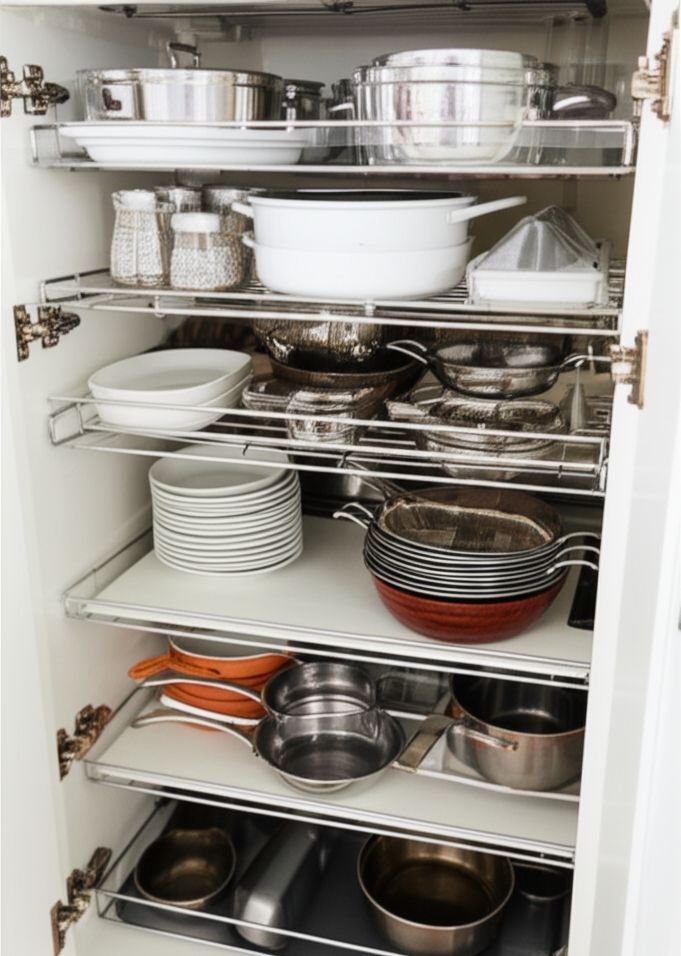
3. Utilizing Organizing Tools and Accessories
Various organizing tools can help you maximize space and keep your cabinets tidy.
- Shelf Risers: These create additional tiers within a cabinet, allowing you to stack plates, bowls, or cups without simply piling them. This makes it easier to access items at the back.
- Pull-Out Drawers and Shelves: These are excellent for deep cabinets, making it easier to reach items stored at the back without having to rummage through everything in front. They are particularly useful for pots, pans, and pantry items.
- Lazy Susans: Rotating turntables are ideal for corner cabinets, allowing you to easily access items stored deep inside. They are also useful for storing spices, condiments, or cleaning supplies.
- Door-Mounted Racks: Utilize the inside of cabinet doors for storing items like spice jars, pot lids, or cleaning sponges. Ensure the thickness of the items doesn’t prevent the door from closing properly.
- Drawer Dividers and Organizers: While this article focuses on cabinets, similar principles apply to kitchen drawers. Dividers and organizers help keep utensils, cutlery, and other items neatly separated.
- Food Storage Container Organizers: Prevent a jumbled mess of lids and containers by using organizers specifically designed for this purpose. Look for stackable containers with matching lids.
- Canisters and Jars: Transfer dry goods like flour, sugar, pasta, and cereal into clear, airtight canisters or jars. This not only keeps them fresh but also creates a more uniform and organized look. Label each container clearly.
- Under-Shelf Baskets: These baskets hang from existing shelves, providing extra storage for smaller items like kitchen cloths, aluminum foil, or plastic wrap.
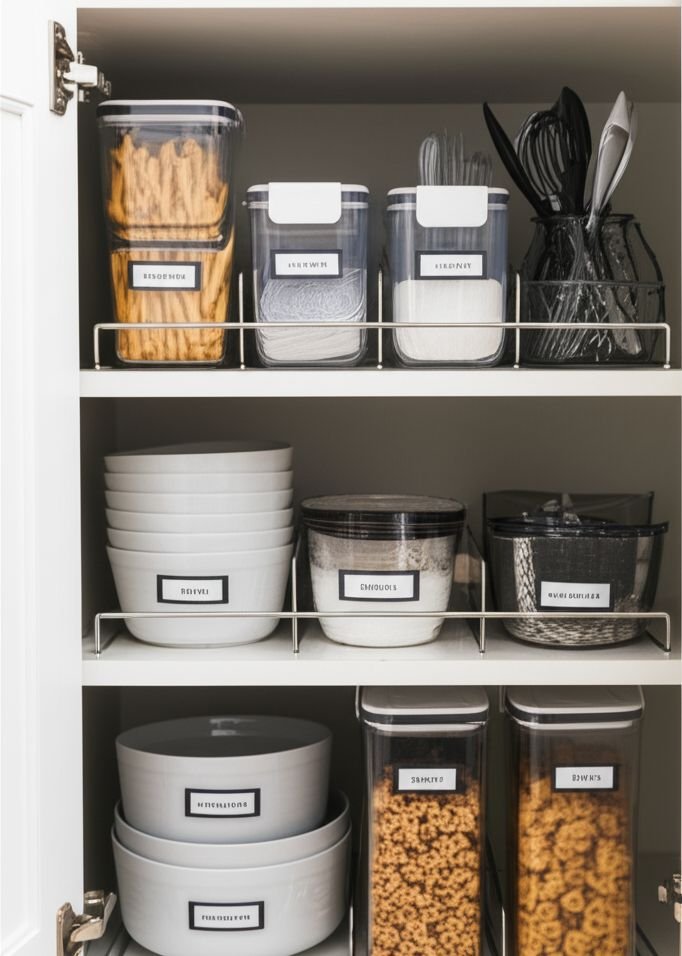
4. Implementing and Maintaining Your System
Once you have a plan and your organizing tools, it’s time to put everything back into your cabinets.
- Work One Cabinet at a Time: Focus on organizing one cabinet completely before moving on to the next. This prevents feeling overwhelmed.
- Place Frequently Used Items First: As you put things back, prioritize the placement of items you use daily in the most accessible spots.
- Group Like Items Together: Keep all your plates together, all your glasses together, and so on. This makes it easier to find what you need.
- Arrange for Visibility: Try to arrange items so that you can easily see what you have. Avoid stacking too many items on top of each other without using shelf risers.
- Consider Weight Distribution: Place heavier items on lower shelves for stability and safety.
- Label Everything: Label shelves (if necessary), canisters, and even the inside of cabinet doors to indicate where specific items belong. This will help everyone in the household maintain the organization.
- Put Items Away Immediately: Develop the habit of putting items back in their designated place immediately after use. This is key to maintaining an organized kitchen.
- Regular Maintenance: Schedule regular mini-decluttering sessions (e.g., once a month) to remove any items that have accumulated and are no longer needed.
- Seasonal Adjustments: If your cooking or baking habits change seasonally, you may need to adjust your cabinet organization accordingly. For example, store holiday-specific baking tools together when in season.
- Review and Adjust: After a few weeks of using your newly organized cabinets, take some time to review what’s working and what’s not. Don’t be afraid to make adjustments to your system as needed. Organization is an ongoing process.
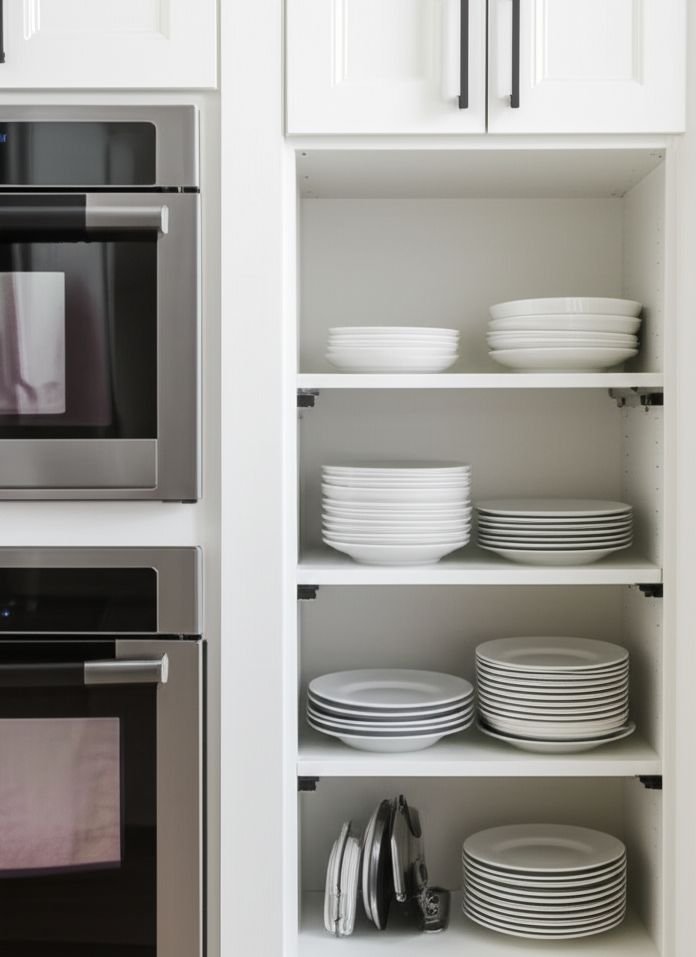
5. Specific Cabinet Organization Strategies
Here are some specific strategies for organizing different types of kitchen cabinets:
- Upper Cabinets (Dishes and Glasses):
- Store everyday dishes close to the dishwasher for easy unloading.
- Stack plates and bowls neatly. Use shelf risers to create more vertical space.
- Arrange glasses and mugs in single layers or use stackable mug organizers.
- Store less frequently used dishes or serving ware on higher shelves.
- Lower Cabinets (Cookware):
- Store pots and pans close to the stovetop.
- Use pull-out drawers or shelves for easier access.
- Consider hanging pot racks if you have limited cabinet space.
- Store lids together using lid organizers or door-mounted racks.
- Nest pots and pans of similar sizes together to save space.
- Corner Cabinets:
- Lazy Susans are highly effective for maximizing space and accessibility.
- Consider blind corner organizers that pull out.
- Store less frequently used items in the back if you don’t have specialized organizers.
- Under-Sink Cabinets:
- This area is often used for cleaning supplies. Use door-mounted caddies and stackable drawers to organize sponges, soaps, and cleaning bottles.
- Be mindful of plumbing and avoid storing items that could be damaged by leaks.
- Use waterproof containers for anything stored in this area.
- Pantry Cabinets (if applicable):
- Group similar food items together on shelves.
- Use clear containers for dry goods and label them clearly.
- Utilize shelf risers to make items at the back more visible.
- Store frequently used items at eye level.
- Consider using over-the-door organizers for smaller items.
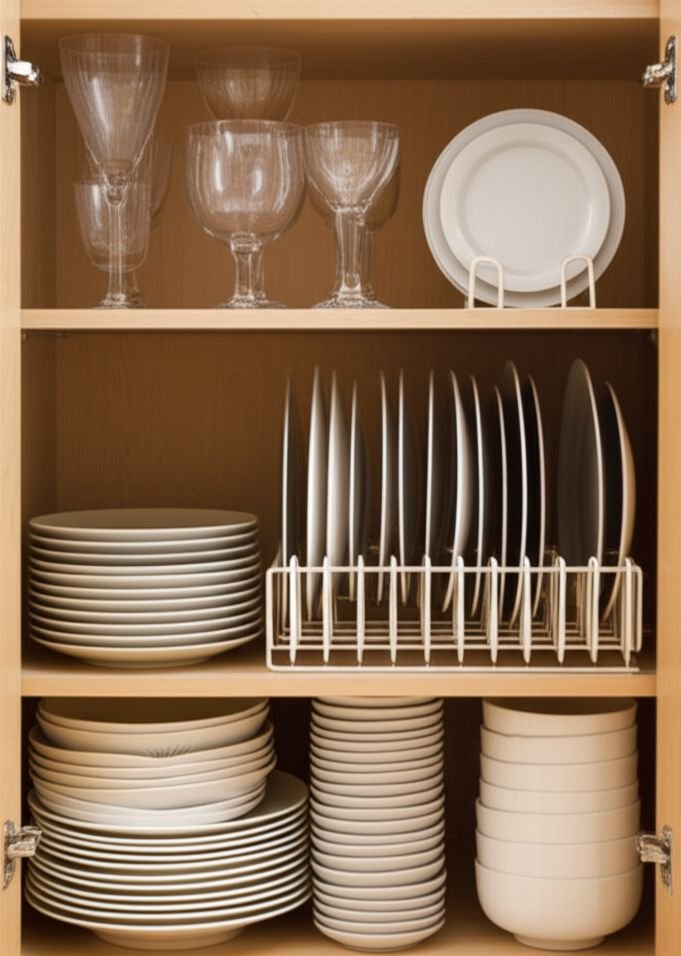
Conclusion
Organizing your kitchen cabinets is an investment in the efficiency and enjoyment of your kitchen.
By following these steps, from decluttering and strategic zoning to utilizing organizing tools and maintaining your system, you can create a functional and clutter-free space.
Remember that the ideal organization system is one that works for you and your specific needs. Take your time, be patient, and enjoy the benefits of a well-organized kitchen.
